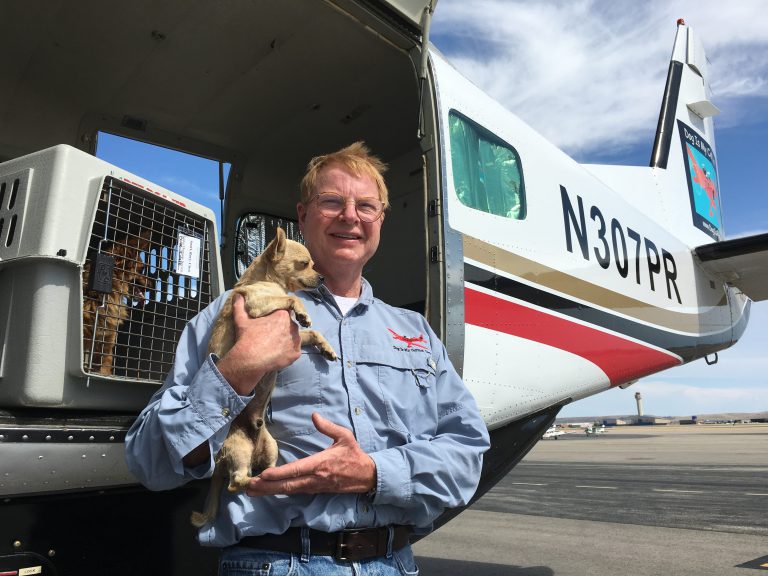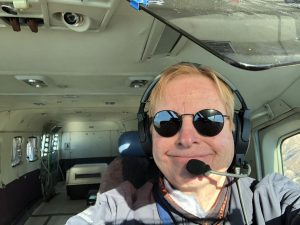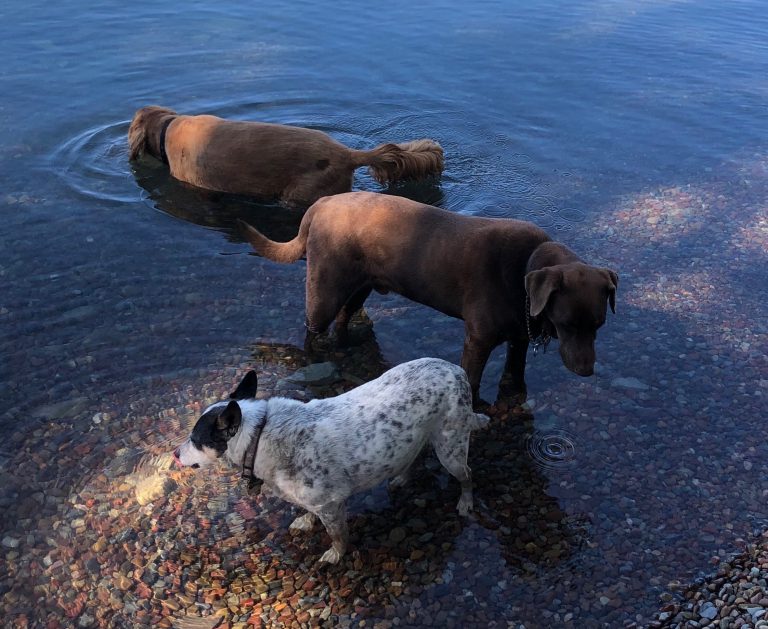Pilot Peter Rork’s passengers are dogs (and cats, too) bound for happy lives.
Rork flies across the United States in his Cessna—nicknamed The Big Dog—transporting animals who may have otherwise been euthanized at overcrowded shelters in states like Texas and New Mexico to no-kill animal rescues in the Northwest that can place them in loving homes.
The founder of the nonprofit Dog Is My CoPilot has saved upwards of 17,000 animals and counting. And more than once, he has adopted one of his canine passengers. In fact, three of them now live with Rork in his house in Jackson Hole, Wyoming.

A rescuer’s rescues
“Rescue is my favorite breed,” says Rork, who has a fondness for larger dogs.
Tia, a Queensland heeler, was Rork’s 4,000th passenger, and, well, he just couldn’t say goodbye to her sweet face. Hobbs, a chocolate Lab, was his 10,000th passenger and irresistibly charming. A shelter in Idaho Falls had asked Rork to transport Bear, a golden retriever, to Missoula, Montana, but, once again, Rork had met a dog he just had to keep for himself.
Rork has had dogs all his life and can’t imagine a home without a pup… or two… or three. “I don’t think a house smells like a home without a wet dog smell,” he says.
His dogs also fly with him sometimes. Tia can climb a ladder into the cockpit and once hosted a rescue flight for 30 cats.
Tia, Hobbs and Bear—and the work he does flying dogs around the country—bring joy and meaning to Rork’s life.
Finding a purpose in flying
He had spent much of his career helping people as an orthopedic surgeon, but Rork retired from medicine after his wife, Meg, died suddenly in 2012. “I went down the darkest hole you can imagine,” he says. “Anybody who has experienced grief can identify with that.”
Concerned, a friend encouraged him to climb out of the rut he was falling into for Meg because she would want him to be happy. The talk inspired Rork to find a reason to wake up every morning, and he decided to help dogs using his skills as a pilot. Rork got his pilot’s license when he was just a teenager and worked as a flight instructor while he attended medical school.
By August 2012, Rork had formed Dog Is My CoPilot and began volunteering his services to an overwhelmed shelter in California before expanding to shelters in Arizona, New Mexico and Texas.
Early on, Rork removed seats in his own small plane to make space for more dog carriers. Eventually, he purchased a bigger plane, the Cessna Caravan he still flies now, so that he could transport not only small dogs but larger dogs weighing 50 pounds or more.
Not letting success stop a mission
For the first seven years running Dog Is My CoPilot, Rork did all of the flying himself and envisioned the project coming to an end once a certain milestone was reached. “When I first started this, I emotionally and financially committed to 10 years or 10,000 animals, whichever came first,” he recalls.
“Well, I blew through that 10,000 animal mark a couple of years ago.”
 And he couldn’t stop at 10,000. There are too many animals in need of saving. According to the ASPCA, approximately 1.5 million shelter animals—670,000 dogs and 860,000 cats—are euthanized each year.
And he couldn’t stop at 10,000. There are too many animals in need of saving. According to the ASPCA, approximately 1.5 million shelter animals—670,000 dogs and 860,000 cats—are euthanized each year.
Grants and donations over the years have allowed Rork to train additional pilots. Today, there are eight volunteer pilots flying life-saving missions for Dog Is My CoPilot.
Kara Pollard, the organization’s executive director, is the force of nature who makes sure all the Dog Is My CoPilot flights take off. “She’s ground control,” Rork says. “She organizes the senders and the receivers. She makes sure everybody shows up on time. She makes sure that they fill the aircraft. She makes sure that the people handling the animals are there thirty minutes early so that when we are flying, especially during the summer, and I land in the airports, and it’s 90 or 100 degrees on the tarmac, that we don’t have to spend more than 30 minutes on the ground before I get them back up in the air where it’s nice and cool.”
Rork can sometimes spend up to 10-and-a-half hours in the cockpit. But as demanding as the flights, which carry anywhere between 100 and 250 animals, can be, Rork gets a lot of satisfaction from the role he plays in making sure dogs get a second chance at the lives they deserve.
He cherishes the wonderful life he has with his own dogs. “When I have time off, I walk them eight or 10 miles every single day,” he says.
After their evening walk, Rork and his furry family get cozy. “We watch Netflix and eat popcorn at night, and they sleep on my bed,” Rork says. “Life is good.”










